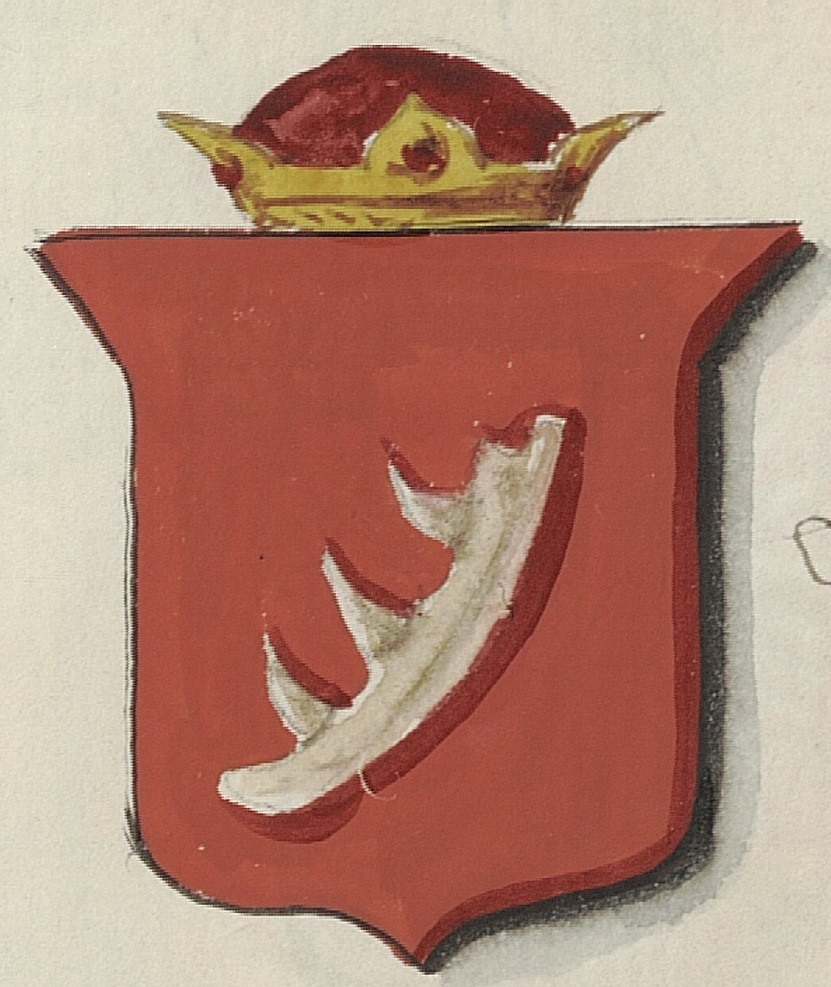|
Dębno Castle
Dębno Castle is a late Gothic complex, built in 1470 to 1480 by Chancellor of the Crown and Kasztelan of Kraków, Jakub Dębiński (also known as Jakub z Dębna), in the southern Polish village of Dębno. It is located a few hundred meters south of the international European route E40. History Before the stone castle was built, a complex made of wood and earth had existed on the location. It probably belonged to komes Świętoslaw of the noble ''Gryfita'' family, Kasztelan of Wiślica. Sometime in the mid-14th century, Dębno passed into the hands of the influential Odrowąż family, to which Jakub z Dębna, founder of the castle, belonged. In 1586 the castle was rebuilt in a Renaissance style. At that time it belonged to a Hungarian nobleman Ferenc Wesselini, secretary of King Stephen Báthory. In the late 18th century, another remodeling took place, ordered by the ''Tarło'' family, who were then-owners of the castle. The Tarło coat of arms and the date ''1772'' can sti ... [...More Info...] [...Related Items...] OR: [Wikipedia] [Google] [Baidu] |
Dębno, Brzesko County
Dębno is a village in Brzesko County, Lesser Poland Voivodeship, in southern Poland. It is the seat of the gmina (administrative district) called Gmina Dębno. It lies approximately east of Brzesko and east of the regional capital Kraków , officially the Royal Capital City of Kraków, is the List of cities and towns in Poland, second-largest and one of the oldest cities in Poland. Situated on the Vistula River in Lesser Poland Voivodeship, the city has a population of 804,237 .... References Villages in Brzesko County {{Brzesko-geo-stub ... [...More Info...] [...Related Items...] OR: [Wikipedia] [Google] [Baidu] |
Stephen Báthory
Stephen Báthory (; ; ; 27 September 1533 – 12 December 1586) was King of Poland and Grand Duke of Lithuania (1576–1586) as well as Prince of Transylvania, earlier Voivode of Transylvania (1571–1576). The son of Stephen VIII Báthory and a member of the Hungarian Báthory noble family, Báthory was a ruler of Transylvania in the 1570s, defeating another challenger for that title, Gáspár Bekes. In 1576, Báthory became the husband of Queen Anna Jagiellon and the third royal election, elected king of Poland. He worked closely with chancellor Jan Zamoyski. The first years of his reign were focused on establishing power, defeating a fellow claimant to the throne, Maximilian II, Holy Roman Emperor, and quelling rebellions, most notably, the Danzig rebellion, Gdańsk rebellion. He reigned only a decade, but is considered one of the most successful Monarchs of Poland, kings in Polish history, Polish and Lithuanian history, particularly in the military realm. His signal ... [...More Info...] [...Related Items...] OR: [Wikipedia] [Google] [Baidu] |
Brzesko County
__NOTOC__ Brzesko County () is a unit of territorial administration and local government (powiat) in Lesser Poland Voivodeship, southern Poland. It came into being on January 1, 1999, as a result of the Polish local government reforms passed in 1998. Its administrative seat and largest town is Brzesko, which lies east of the regional capital Kraków. The only other town in the county is Czchów, lying south of Brzesko. The county covers an area of . As of 2019 its total population is 93,139, out of which the population of Brzesko is 16,792, that of Czchów is 2,345, and the rural population is 74,002. Neighbouring counties Brzesko County is bordered by Tarnów County to the east, Nowy Sącz County and Limanowa County to the south, Bochnia County to the west, and Proszowice County to the north-west. Administrative division The county is subdivided into seven gmina The gmina (Polish: , plural ''gminy'' ) is the basic unit of the administrative division of Poland, similar t ... [...More Info...] [...Related Items...] OR: [Wikipedia] [Google] [Baidu] |
Castles In Lesser Poland Voivodeship
A castle is a type of fortification, fortified structure built during the Middle Ages predominantly by the nobility or royalty and by Military order (monastic society), military orders. Scholars usually consider a ''castle'' to be the private fortified house, fortified residence of a lord or noble. This is distinct from a mansion, palace, and villa, whose main purpose was exclusively for ''pleasance'' and are not primarily fortresses but may be fortified. Use of the term has varied over time and, sometimes, has also been applied to structures such as hill forts and 19th- and 20th-century homes built to resemble castles. Over the Middle Ages, when genuine castles were built, they took on a great many forms with many different features, although some, such as curtain wall (fortification), curtain walls, arrowslits, and portcullises, were commonplace. European-style castles originated in the 9th and 10th centuries after the fall of the Carolingian Empire, which resulted ... [...More Info...] [...Related Items...] OR: [Wikipedia] [Google] [Baidu] |

